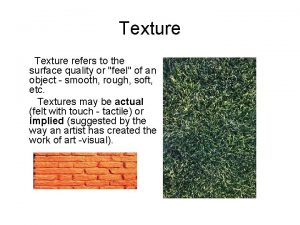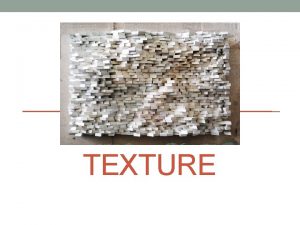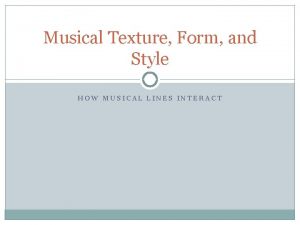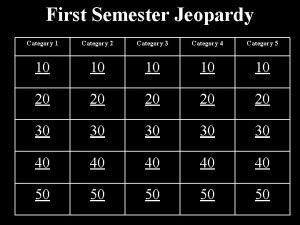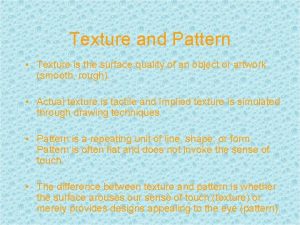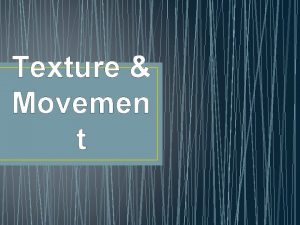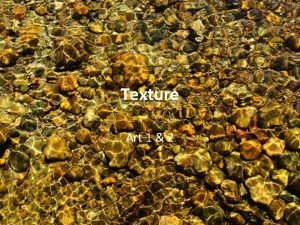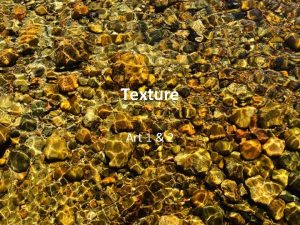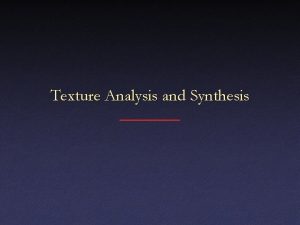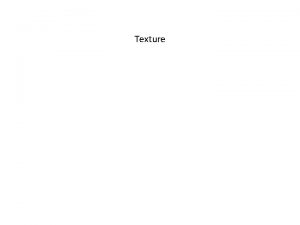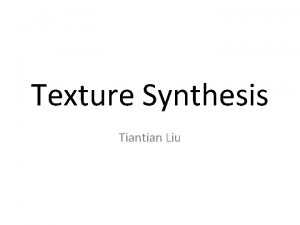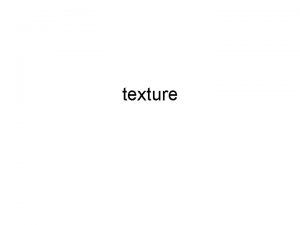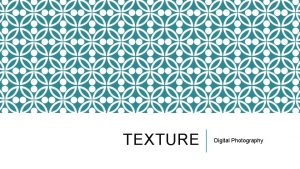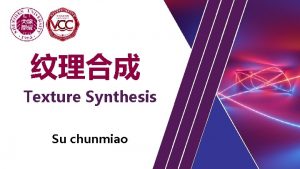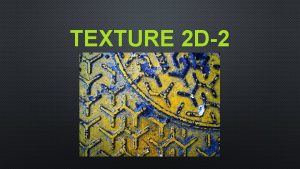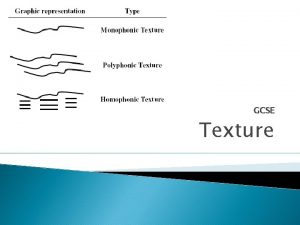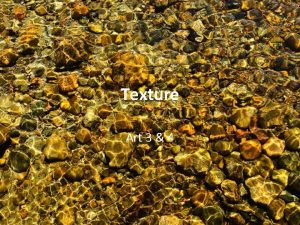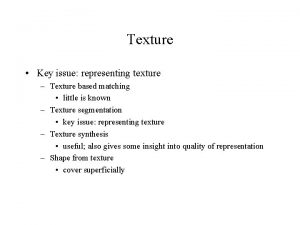TEXTURE Texture refers to the surface quality or
















- Slides: 16

TEXTURE

Texture refers to the surface quality or "feel" of an object - smooth, rough, soft, etc. Textures may be actual (felt with touch - tactile) or implied (suggested by the way an artist has created the work of art -visual).

Actual Texture • Texture is the tactile quality of a surface or the representation of that surface. If it is the way something feels when you touch it, it is called real texture. • In art, real texture will be more likely seen in sculpture, but painters can also create real texture with thick paint

Real Texture - Painting

Real Texture OBJECT by Meret Oppenheim

Simulated or Implied texture Texture is what your eyes tell you about how things in the drawing would feel if you could touch them, called simulated texture. Photography is very good at translating real texture into implied or simulated texture, but painters and draftsmen can also learn to recreate the visual appearance of textures in very convincing ways.

Trompe l’oeil • VISUAL TEXTURE is the illusion of texture. • trompe l'oeil is a method of art that is intended to create a realistic illusion of texture and depth in a work of art. The term means "fool the eye" in French.

Simulated or Implied Texture



Examples of students creating their own textures.

Sometimes, visual textures can be small icons of natural forms, or a mini-composition of lines and shapes that contrast each other. In these two groups you will see textures suggested by food, animals, medallions, geometry, games or weather and many that are just simple line designs.

ARTISTS WHO USE TEXTURE

George Seurat (1859 -1891) • French Post-Impressionist painter. • He did a lot of optical mixing as well… relying on the viewer’s eye to see different colors through his use of POINTILISM (aka painting using dots/stippling) • Most paintings are of common scenes in France

Anselm Kiefer (1945 -____) • A German Neo- Expressionist painter and sculptor whose work often reacts to modern day issues • He often incorporates clay, straw, ash, lead, and collage into his paintings to add texture. • His art resembles the past yet a futuristic postapocalyptic landscape.

Jessica Drenk (1976 -____) • A contemporary young American sculptor. • All of her sculptures emphasize form and texture. She works in all types of materials, including pencils. Her sculptures can be hard and sharp or soft and delicate. There’s a huge range.
 Refers to the surface quality
Refers to the surface quality Texture refers to the
Texture refers to the 8 elements of music
8 elements of music Musical texture refers to
Musical texture refers to A preliminary synopsis of a film's action is called a
A preliminary synopsis of a film's action is called a Pmp quality vs grade
Pmp quality vs grade Basic concepts of quality control
Basic concepts of quality control Pmbok quality management
Pmbok quality management Quality gurus of tqm
Quality gurus of tqm Ana model of quality assurance
Ana model of quality assurance Quality is free: the art of making quality certain
Quality is free: the art of making quality certain Perform quality assurance
Perform quality assurance Compliance vs quality
Compliance vs quality Old quality vs new quality
Old quality vs new quality Tceq segment viewer
Tceq segment viewer Njdep gwqs
Njdep gwqs Texas surface water quality standards
Texas surface water quality standards
